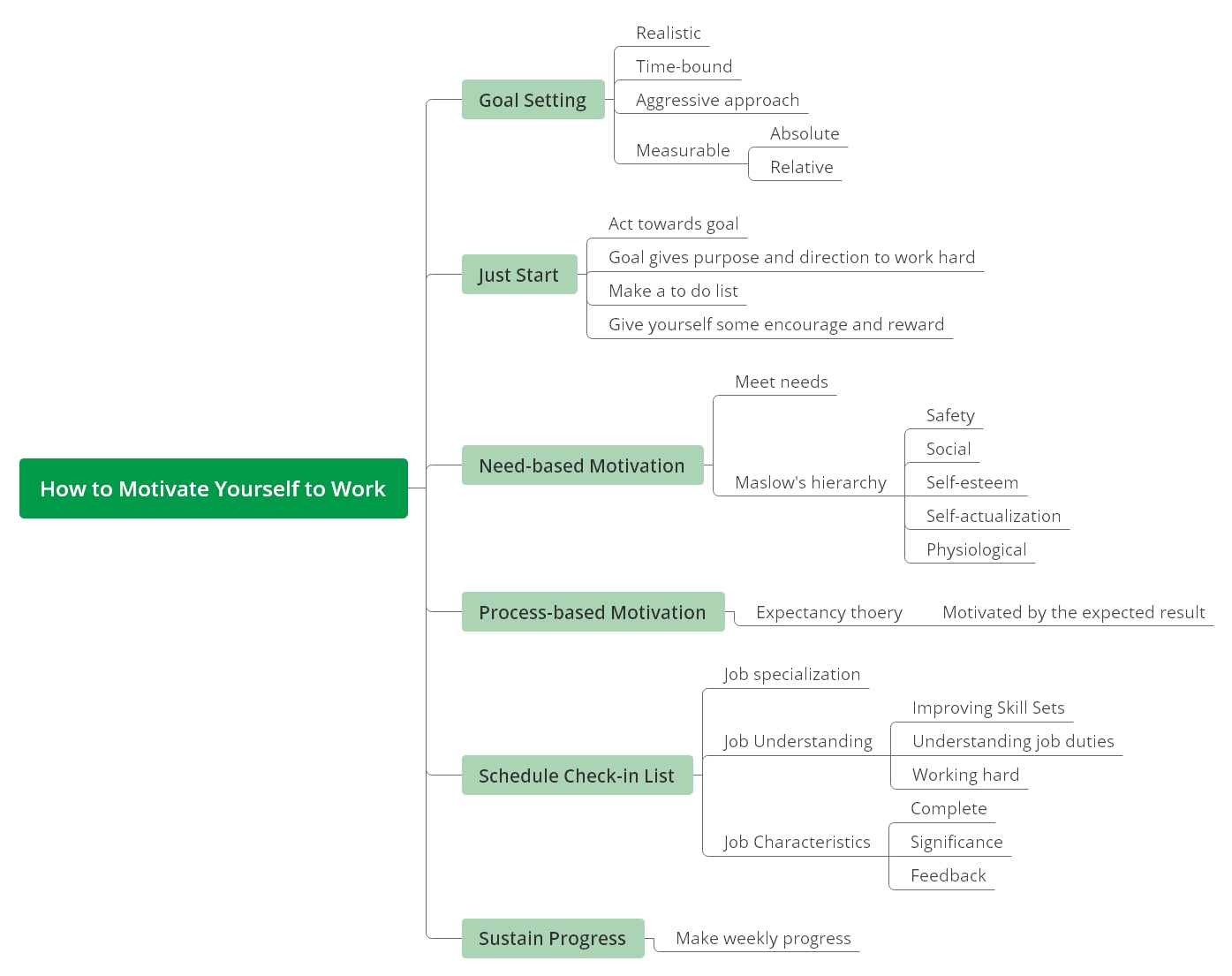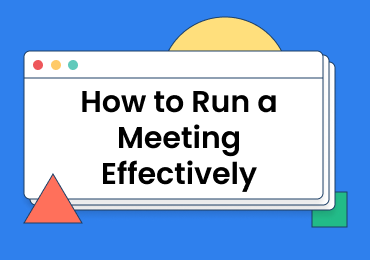How to Motivate Yourself to Work

How to
There can be many scenarios that can be dreading the prospect of an assigned task, to a point where it is emotionally draining.
Motivation, on the other hand, is somewhat elusive. Here are six simple steps you can implement to get motivated for work done. With this motivation mind map, you can see how to enhance your motivation for work.

Source: EdrawMind
1.1 Set Goals
It is far more important to set goals for work and tasks, which is always the first aspect of how to motivate yourself to work. For example, experiments have found that when salespeople have goals, they close more transactions. When consumers adhere to a physical activity, they are more likely to improve their health rates.
Abstract goals – such as "doing your best" – are typically much less successful than real stuff, such as attracting ten new clients a month or taking 10,000 steps a day. Then, as a first general rule, all objectives you set for yourself or commit to must be precise.
Goals can always activate internal motivation rather than extrinsic motivation whenever possible. The action is intrinsically motivating when perceived on its end; when perceived as having a different, ulterior reason, it is extrinsically driven — rewarding you or helping you escape the penalty.

1.2 Challenge Yourself to ‘Just’ Start
The most challenging part of getting yourself ready to work has to start. When you're staring at an ever-growing to-do list or the vast number of words you've got to write, the thought of completing it may seem unlikely.
The thing is, your work will seem to flow once you start. If you find yourself looking at a computer aimlessly trying to build up the courage to get going, set a timer, and take the very first move when it reaches zero. It is, after all, how every journey starts with the first step. Instead of thinking about completing it, take a step towards it.
Soon as you find out that something has to be done, leap into it and do that thing right away (provided the circumstances are possible, of course). You don't have to think about anything else, erase any of those emotions, keep your mind blank, and behave like robots.
Otherwise, you'll be contemplating whether you will do it now, whether there are other more pleasurable and exciting things to do with this tedious work.

1.3 Need-based Motivation
Abraham Maslow, one of the 20th century's most influential psychologists, developed a hierarchy of desires, represented by a pyramid that illustrates how individual needs are ranked. Maslow's philosophy is based on the idea that hierarchically organized needs to drive people.
Some of these necessities are essential to all people. We continue to search at higher-order needs when a specific requirement is met. The first basic emotional needs, including air, food, and water, are our physiological needs. When our basic needs have been fulfilled, we are worried about health, which includes our physical protection and safety and our work security.
A fundamental human purpose is known to be the desire for happiness, fellowship, and family. Once we have achieved a sense of identity, our need for esteem — the need to be valued, considered significant, and admired by one's peers — becomes more prevalent. The highest level of the hierarchy is the need for self-actualization, referring to "becoming all that you can become.

1.4 Expectancy Theory of Motivation
The expectancy theory claims that workers' incentive is a result of how badly a person needs a reward, the expectation that the probability of the action will lead to desired results, and the assumption that the success will lead to compensation.
Some of the advantages of this theory are that
- It is based on human self-interest who wishes to gain full fulfillment and who wishes to mitigate disappointment;
- This philosophy emphasizes perceptions and perception; it is immaterial what is real and what is actual;
- It emphasizes paybacks or rewards;
- It reflects psychological extravagance where an individual's primary objective is to achieve full happiness and least pain.

1.5 Schedule Check List
Never having success can be one of the most challenging aspects of working out for building up their exercise level. It is easy to want to give up when it feels like nothing you're doing makes a difference.
It is advised that you arrange weekly check-ins for yourself. Give yourself an hour or two to decide what can help you accomplish your goals, and what you're not pumped.
In group settings, confidence in group meetings where little focus is paid to one-on-one relationships is hard to cultivate. The essence of a weekly check-in allows a supervisor and a staff member to share some time.

1.6 Sustain Progress
If you break your goal into smaller sub-goals — say, weekly rather than quarterly sales targets — there's less time to succumb to the slump of unproductivity.
For example, customers prefer to spend more on loyalty services when they're closer to receiving a payout. By thinking of the starting point as being farther back in the past, you will take advantage of the tendency; maybe the idea did not start the first time you took action, but the moment it was first proposed.

In positive psychology, flow is characterized as a mental state where everyone is fully absorbed in an experience, with intense concentration and enjoyment.
It can help tap the power of intrinsic and extrinsic motivators in those situations, set incentives carefully, turn our focus either behind or ahead depending on how close we are to the finish, and harness social influence. Self-motivation is one of the most daunting skills to master yet crucial for how to motivate yourself to work.
EdrawMind is an easy-to-use, flexible mind mapping tool designed to help you generate modern, fresh visuals. Through combining the bullet points into a mind map on a project, EdrawMind lets you organize the thoughts or concepts and create important strategies and visually appealing mind maps.







